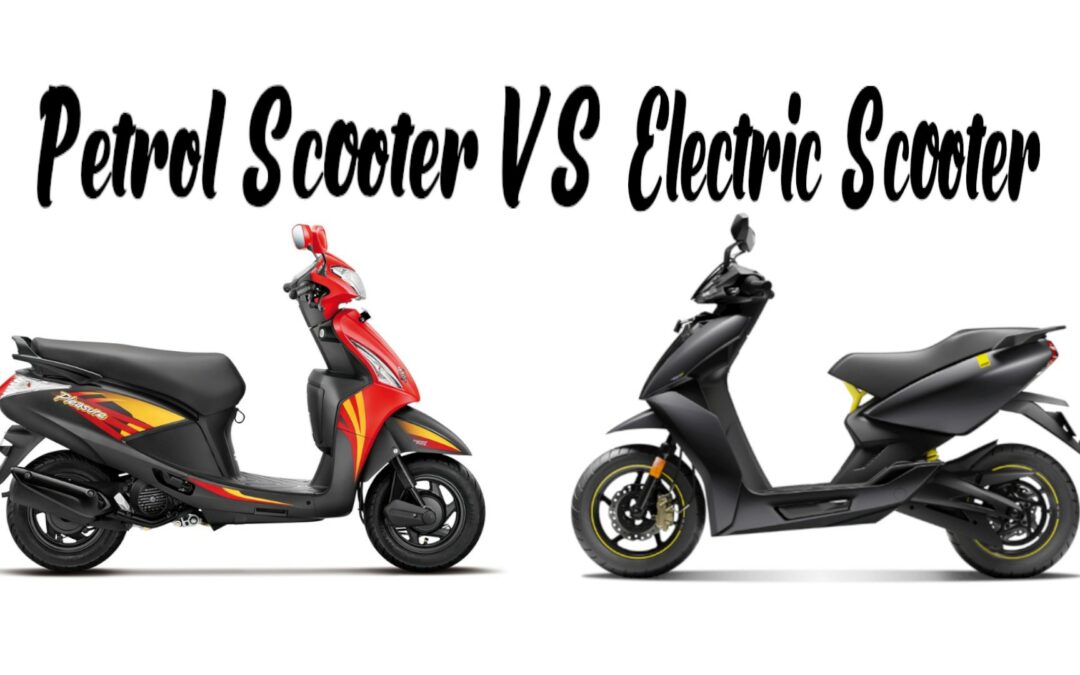There is no getting out of it! Electric is coming and petrol powered scooters will soon be a thing of the past. I know that I’ll be sad to lose the petrol powered scooters that I’ve come to understand so well. The sound of the engine cranking over, the ignition, and that sound of the first big rev of the morning. In fairness we’ve felt the demise of petrol engines for a while. The smoky two stroke petrol engines were fazed out a few years ago and marked the beginning of the end for petrol engines in general.
Now, it looks like there will be no more petrol scooters on offer after 2035, which is only around the corner. In fact, most companies will actually phase out petrol before that date in preparation for an exclusively zero emissions scooter market.
The new wave of electric scooters will be about 10% lighter than petrol machines, have a minimal impact on our environment emissions wise, and that includes noise pollution which is greatly reduced. There are fewer moving parts and very little to check as far as maintenance goes, as there is no engine or gearbox oils, coolant or even a spark plug.
What does this mean most of us?
For most riders this will mean finding your window to swap over to electric scooters. Some early adopters will be straight onto electric as there are good models coming onto the market in 2024/2025 like the impressive Segway E300se. Regular longer distance riders that trade in their scooter every four years, may wait a cycle before going electric until ranges improve beyond the typical 80-120km range that is currently on offer. Either way electric is going to happen and so it might be handy to know a few things about electric ownership in the meantime.
Purchasing costs
Get used to it everyone. To buy an electric scooter will cost more that a petrol scooter. This is mainly because the batteries are expensive ($1500- $3000). The manufacturing costs are similar to build petrol or electric machines, but the batteries to power electric vehicles are pricey, so we’ll all have to get used to a higher priced initial investment.
Servicing electric scooters
The good news is that once we have made that purchase, electric scooter running costs are quite a bit lower than petrol scooters. In fact, we are seeing servicing and recharging costs are less than a third of powering a petrol machine. So, for higher mileage riders (10,000kms), if your average servicing cost is say $500 per year and your fuel to travel 10,000kms burns around 400 litres at $2 a litre ($800), your annual spend of $1300, and is roughly halved to $550 if you compare electric. This helps recover some of that initial investment.
Charging electric scooters
Here’s where we’ll feel a change in our riding habits. While we’ll still have to visit the service station to check our tyres, recharging will be generally done at home or maybe even at work. Most scooters can simply be plugged into the wall using the charging kit supplied. If you don’t have power available where you park (like on the street), some electric scooters allow you to remove the battery and take it inside to charge. Typically most electric scooters will have a useable range of 80-110kms, so think 65-100kms to a recharge. For some commuters and delivery riders this will mean charging every day, while casual riders might be fine for a week or more. Either way, we’ll have to ensure we have an electricity available regularly to recharge.
Government Plans
At the time of writing the ACT had a zero emission plan to completely phase out light combustion vehicle engines ( think cars, motorcycles and scooters….not trucks ) by 2035 and an ambitious target of 80-90 per cent of all new light vehicles sales being zero-emissions vehicles by 2030. This is similar for the United Kingdom.
The ACT will also continue to offer a range of electric vehicle incentives, which currently include: stamp duty waivers, free vehicle registration and no-interest loan. In addition, it said it will extend stamp duty waivers for buyers of used electric and hydrogen vehicles purchased from August 1 2022, cutting the cost of an average second-hand vehicle. I’d suggest other States will come up with similar plans in the near future.
So what does all this mean?
While there is some talk of hydrogen powered scooters, more and more scooters are likely to be electric going forward. In practical terms, I think most high mileage riders will stick with petrol power until maybe 2027- 2030 and transition to electric thereafter when there is a wider choice, longer ranges on offer and hopefully slightly lower purchase cost. It’s also worth noting that if you wait until 2035, your old petrol powered machine may be less valuable to sell in an all electric marketplace.
Low to medium mileage users (say 60-80kms a week) should definitely check out the electric offerings. This rider will charge their electric scooter weekly on average which isn’t too much trouble.
It will be up to consumers to add pressure to government to increase their investment in electric infrastructure since that is the future.
Go to the bottom of our homepage and sign up for our E-Newsletter and check our website regularly for updates!
And remember to check out the Segway E300se. It’s passed our rigorous tests and I liked it a lot.
Cheers, Murray

